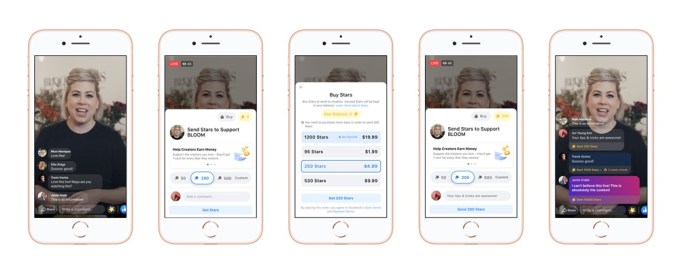Facebook is expanding the availability of the tools it offers to help game streamers and other online creators make money.
The social network first launched fan subscriptions in early 2018, giving a small group of creators in the United States and the United Kingdom the ability to charge their fans a $4.99 monthly fee for exclusive content and a fan badge for their profiles.
Participation in the subscription program was limited until today. In a blog post, Facebook now says that any creator in Australia, Brazil, Canada, Mexico, Thailand, United Kingdom and United States that meets the subscription eligibility criteria (having 10,000 followers or more than 250 return viewers, and either 50,000 post engagements or 180,000 watch minutes in the last 60 days, as well as abiding by Facebook’s general monetization policies) should be able to sign up to participate.
The company monetizes these subscriptions by taking up to 30% of subscription revenue. (It only collects revenue on subscribers acquired after January 1, 2020.)

Image Credits: Facebook
Facebook is also expanding the availability of Stars, a virtual currency that fans can use to tip their favorite creators. Creators in Australia, Canada, Columbia, India, Indonesia, Italy, Spain, Germany, France, Malaysia, Mexico, New Zealand, Peru, Philippines, Taiwan, Thailand, United Kingdom and the United States can now participate.
“We’re seeing the traditional notion of a creator evolve as comedians, artists, fitness instructors, athletes, small businesses and sports organizations use video and online events to connect with their audience,” wrote Product Marketing Director Yoav Arnstein, Product Marketing Director and Head of Creator & Publisher Experience Jeff Birkeland. “To better support our partners, we’re improving the tools that help creators earn money and manage their presence on Facebook.”
Beyond subscriptions and virtual currencies, the company says it’s giving creators new ways to make money through advertising, including image and post-roll ads in short-form videos (60 to 180 seconds), as well as ads in live videos.
Lastly, Facebook says it’s improving the Creator Studio tool with features like Comment Insights (which show how comments on posts can affect engagement and audience size) and the ability to log in using Instagram credentials.
from TechCrunch https://ift.tt/3g14H8e
via IFTTT
Comments
Post a Comment